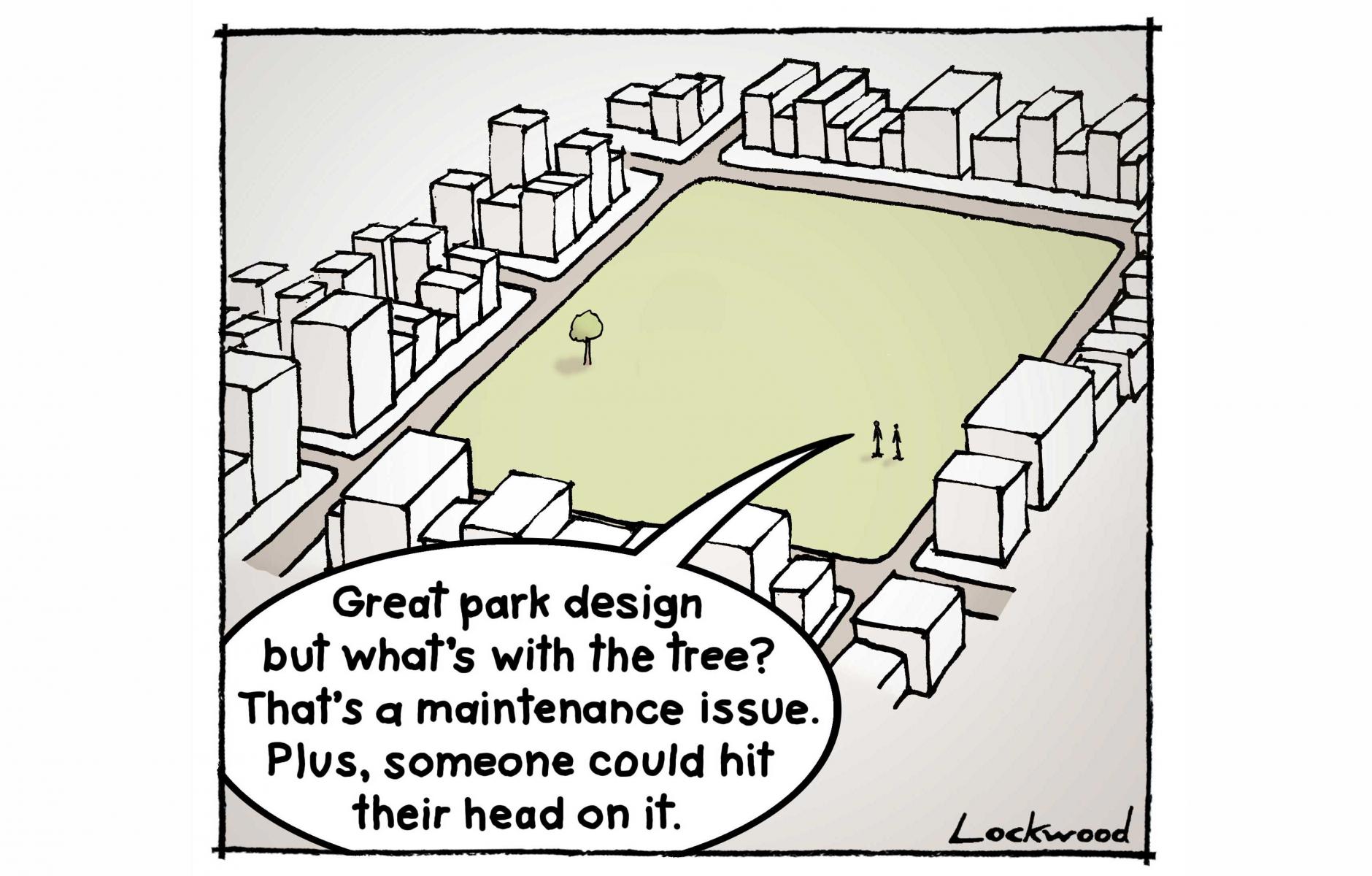
What drives design in your community?
For decades, we’ve been designing streets, trails, and parks in many cities and with many clients. One goal is to attract people and investment to places. Another is to design projects that are easy to maintain, safe, attractive, and comfortable for people to use. Typically, clients (e.g. city staff members, state officials) are enthusiastic. Occasionally, we encounter someone who overplays the “maintenance card” or the “liability card” so much so that the design and the future success of the place are put in jeopardy.
As seasoned researchers, planners, designers, and engineers, we understand the maintenance and liability issues. Even when we innovate or experiment, we take normal precautions about liability (i.e., use the best information that is reasonably accessible, document why the design decisions were made, and monitor the project over time). However, what we have begun to realize is that maintenance and liability concerns are usually just an excuse. What really jeopardizes the potential of the project is fear. Some people fear doing something differently, raising expectations and then not delivering, or simply making decisions—especially when opinions around them vary. Other people are just lazy and don’t want to do the work that is necessary to achieve a better place.
Good practitioners tend to recognize the excuse(s), and can sensitively help people address what is really bothering them. Poor practitioners take the easy path, compromise their designs and the public realm, and do themselves, their profession, and society a disservice. As a design community, we need to redouble our efforts to combat fear-based planning, design, and decision-making. Places will improve, precedents will be bolder, the rate of innovation will rise, liability and maintenance will be overemphasized less often, and people in the design professions will make a bigger difference.




